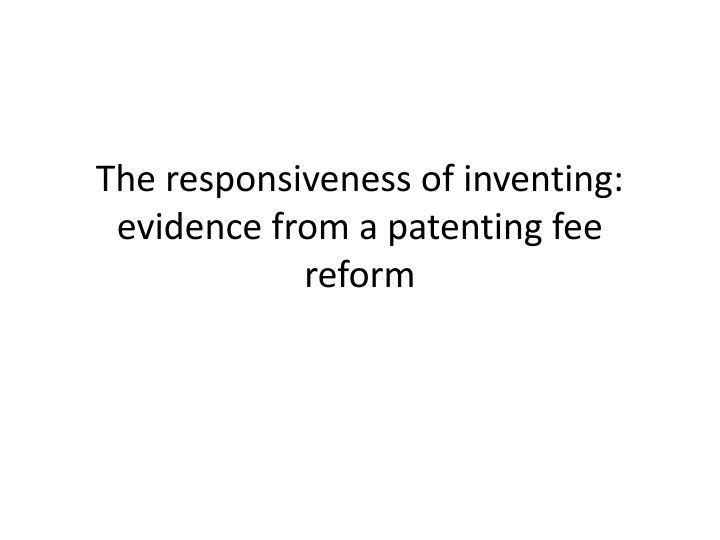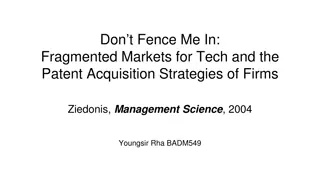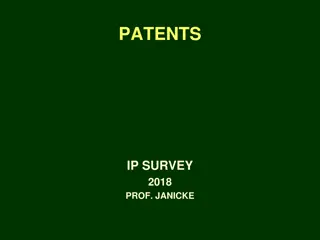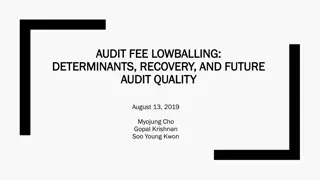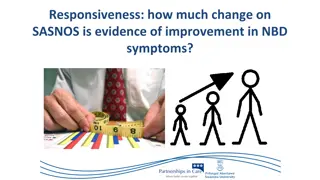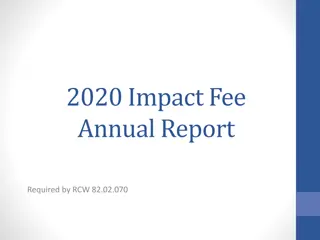The Responsiveness of Inventing: Evidence from a Patenting Fee Reform Study
Study explores the impact of a patenting fee reform in 1884 on inventing efforts and quality, contrasting findings with earlier research, set against a historical context of innovation trends and economic growth across different countries.
Download Presentation

Please find below an Image/Link to download the presentation.
The content on the website is provided AS IS for your information and personal use only. It may not be sold, licensed, or shared on other websites without obtaining consent from the author.If you encounter any issues during the download, it is possible that the publisher has removed the file from their server.
You are allowed to download the files provided on this website for personal or commercial use, subject to the condition that they are used lawfully. All files are the property of their respective owners.
The content on the website is provided AS IS for your information and personal use only. It may not be sold, licensed, or shared on other websites without obtaining consent from the author.
E N D
Presentation Transcript
The responsiveness of inventing: evidence from a patenting fee reform
Study of the effect of the 1884 reform (from 25 to 4 pounds) Reform was studied by Nicholas (2011) who found effect on propensity but not on quality (renewals and citations). Nicholas: sample of random patents (1878- 1888), 20% (13,833) This paper: 42,500 patents (1879-1888) finds a strong effect on effort and quality
Historical setting Climacteric (slowdown of Britain s after the IR; catching up and forging ahead of Germany and US) Data on aggregate productivity and on manufacturing do not seem to indicate acceleration of innovation.
TABLE 1: Growth of Aggregate GDP per Hour Worked (% per annum) 1870- 1913 1929 1938 Austria 1.7 0.8 0.2 Belgium 1.2 1.8 1.0 Denmark 1.9 2.5 0.4 Finland 1.8 2.2 2.0 France 1.7 2.3 2.8 Germany 1.8 1.4 1.1 Italy 1.6 2.0 3.0 Netherlands 1.3 2.8 -0.1 Norway 1.6 2.8 2.5 Sweden 1.7 1.5 2.9 Switzerland 1.4 3.2 1.0 UK 1.2 1.4 0.8 Australia 1.1 1.3 1.1 Canada 2.2 1.3 0.1 USA 1.9 2.4 1.5 Japan 1.9 3.4 2.3 Average of 16 1.6 2.1 1.4 UK rank 14= 12= 12 1913- 1929- 1938- 1950 1.6 1.2 0.8 2.2 0.5 -0.9 1.0 0.3 1.9 4.2 3.3 2.3 1.6 5.2 3.2 -0.6 1950- 1973 5.7 4.4 4.4 5.3 5.0 5.8 5.6 4.7 4.1 4.1 3.2 3.1 2.9 2.9 2.7 7.4 1973- 1992 2.4 2.9 1.7 2.2 2.7 2.7 2.4 2.2 3.2 1.3 1.7 2.2 1.5 1.5 1.1 3.1 1.7 4.5 13 2.2 8= 5 4
TABLE 4: Comparative Levels of Labour Productivity in Manufacturing (UK Output per Employee = 100) UK USA Canada Australia Germany Netherlands Norway Sweden Denmark France Italy Japan 1870 100 204 88 1913 100 213 153 138 119 1929 100 250 170 102 105 102 109 94 115 82 59 32 1938 100 192 145 101 107 117 95 100 98 76 49 42 1950 100 263 151 96 96 88 103 118 88 84 68 20 1973 100 215 153 86 119 133 104 128 89 114 96 95 1989 100 177 123 81 105 128 85 121 93 115 111 143 100 90 102 79 59 24 5
TABLE 2: Comparative levels of GDP per capita (US = 100) UK USA Germany France Italy Netherlands Japan 1870 1913 1929 1938 1950 1973 2001 133 95 76 98 100 100 100 100 78 72 63 84 75 65 68 72 60 47 44 53 107 74 80 84 30 25 28 38 72 100 45 55 36 61 20 72 100 79 78 63 77 66 72 100 67 75 68 78 74 6
Some questions Sectoral evidence ? Did the reform determine sectoral shifts (eg, lock-in in the sector of the first IR)? If returns of innovation are uncertain reduction of the fee may be used to prolong patents or take patents in the US. Is this contemplated in the model?
Biological Innovation without IPRs: Cotton Breeding in the Antebellum American South
The missing chapter? Well before plants received patent protection there was a plethora of private sector inventive activity, where leading farmers and seed companies made significant contributions to plant improvement. State and federal agencies significantly added to this brew. Animal breeders were at least as active, and many developed national markets for their creations. A large and important literature has identified inventions with patents. The absence of patent records for a large class of biological activities has led to the inference that little has happened. However a search of the press, farm journals, Patent Commission reports, and various state and federal commission reports suggests that innovators were making great strides in the introduction of new and more productive plants and animals. Olmstead, A. and Rhode, P., (2008), Creating Abundance. Biological Innovation and American Agricultural Development, Cambridge, Cambridge University Press.
Historical case-study of innovation in the cotton seed market Another significant case of innovation without IP in the XIX century Price of seeds variety reflects dynamics of innovation and imitation (innovators lead time is enough to recoup investment in R&D) Seeds are experience goods => importance of reputation Complex ecology with 3 types of seed breeders: - core: a stable set of producers of standardized high-quality varieties - fringe 1: one-time discoverers or importers of new varieties - fringe 2: the third camp combined attributes of the other two, working systematically to breed a series of new better cottons Some in this group tied their seed business with other commercial endeavors such as selling fertilizer or publishing farm journals Questions - humbugs are from fringe 1? Or actually we have four camps? - relative size of the camps? Evolving of our time? Single breeders could change camps - Knowledge sharing only in fringe 2 ? How important for innovation ? Is Allen s notion of collective invention relevant in this case (also in Allen s case, reputation was very important )
Implications Historical case different from current environment (R&D costs are much higher) Innovation model is endogenous Performance of new innovation model settings is not obvious (more exploitation than exploration, ) Campi & Nuvolari (2015)
